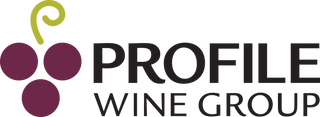The Mystical Rise of Cult Wine
A certain mystery and delight are evoked with its mere mention. While some winemakers dislike the term, a Cult Wine has come to encapsulate three main things: rarity, high prices and supreme quality. Many consider Napa Valley the birthplace of the cult wine phenomenon, and so its most famous grape, Cabernet Sauvignon, comprises many of the world’s most sought-after cult wines. However, there are cult wines made from other grapes and in other regions around the world.
As U.S. wine drinkers developed their palates in the latter half of the 20th century, wine critics played a large part in establishing the reputation of many of the country’s enduring cult wines. Now, cult bottlings are generally only available to purchase if you’re on the allocation list or via the secondary market.
What triggered Napa’s Cult Wine following? Many would point to the following noteworthy purchase: in 2008, a billionaire purchased six magnums of Screaming Eagle’s 1992 Cabernet Sauvignon for $500,000. Only 225 cases of the wine were ever made and it’s among the most coveted brands worldwide.
What is interesting, Screaming Eagle’s team never set out to make a cult wine.
According to Heidi Barrett, Screaming Eagle’s original winemaker, the brand didn’t really exist in its current form when she began working there. She’d been making wine down the hill at Dalla Valle and the owners gave her a directive: “Go help Jean [Phillips, the founder of Screaming Eagle] make wine,” she says. “It was a no-frills, pay-by-the-hour situation.”
In 1992, Barrett made 175 cases of Screaming Eagle. Phillips sold that Cabernet blend at Napa’s famed Oakville Grocery, and it was on the list at Bistro Don Giovanni.
Apparently, they also gave a lot of it away.
When the owners of Screaming Eagle began entering the wine in local competitions, the recognition began to roll in.
As whispers of how good Screaming Eagle was grew in volume, Phillips priced the wine at $75 U.S., an unprecedented move at a time when high-end domestic wines often maxed out at about $50. That led a friend, unbeknownst to Phillips and Barrett, to give the wine to Robert Parker to review. He initially gave it 99 points. However, after sitting with it for a while, he rescinded the score and re-scored it at 100 points.
Some wondered if this sudden success was pure luck. Screaming Eagle became globally renowned, and its success catapulted Heidi Barrett into the spotlight as one of the most respected consulting winemakers in the world.
Around the same time, another winery producing a sought-after Cabernet blend, Harlan Estate, was emerging in Napa. Unlike Phillips, Harlan Estate founder Bill Harlan deliberately set out to create a notable wine, one that he calls a “California First Growth” of grand cru quality.
According to Brett Anderson, director of culture and communication at Harlan Family Wines, Harlan had a rather fortuitous call with Robert Mondavi in 1979 that persuaded him that he needed to make high quality wine. Mondavi promised that he would introduce Harlan to some of France’s greatest winemakers. A subsequent trip through Europe to meet with Mondavi’s wine contacts convinced Harlan of Napa’s potential for greatness. He used Burgundy and Bordeaux as models for his Napa site selection, viticulture and winemaking processes.
In 1984, Harlan bought 240 acres in the western hills of Napa Valley, on east-facing slopes. Thus began the rise of what would become a near-mythical wine: Harlan Estate.
Using his same rigorous criteria for site selection, Harlan created single-vineyard, single variety wines in Napa Valley, all modeled after Burgundy’s grand crus. That model would ultimately become BOND, Harlan’s other cult classic label.
Renowned British Wine Critic, Jancis Robinson described Harlan as “one of the ten best wines of the twentieth century”, Harlan Estate’s flagship red – new French oak barrelled for up to 36 months depending on the vintage – is a truly unique expression of a California Cabernet Sauvignon; rich, deep and concentrated with a sense of elegance and purity.
Screaming Eagle, Opus One, Harlan Estates, Dominus –the US boasts some of the biggest names in all of fine wine that form timeless collector’s items and some of the lead sources of price appreciation.
Other Napa wineries included in the cult producer category include Bryant Family, Colgin, Dalla Valle, Dominus Estate, Eisele Vineyard Estate (formerly Araujo Winery), Hundred Acre, Scarecrow and Schrader.
All of these wineries have long wait times for a spot on the allocation list, limited production, high prices, and most of the wineries themselves are closed to the public.
To secure an allocation of a coveted Napa classic, contact us @ info@profilewinegroup.com





